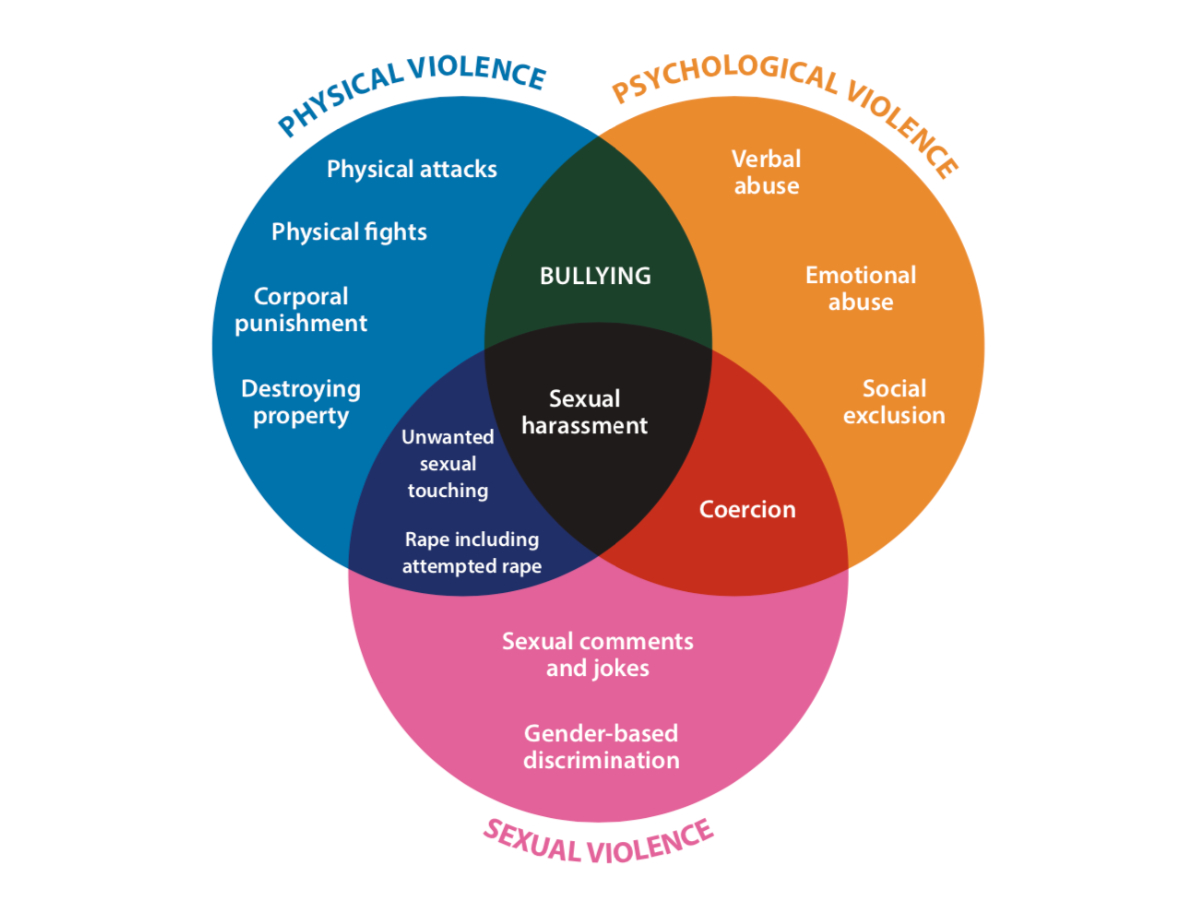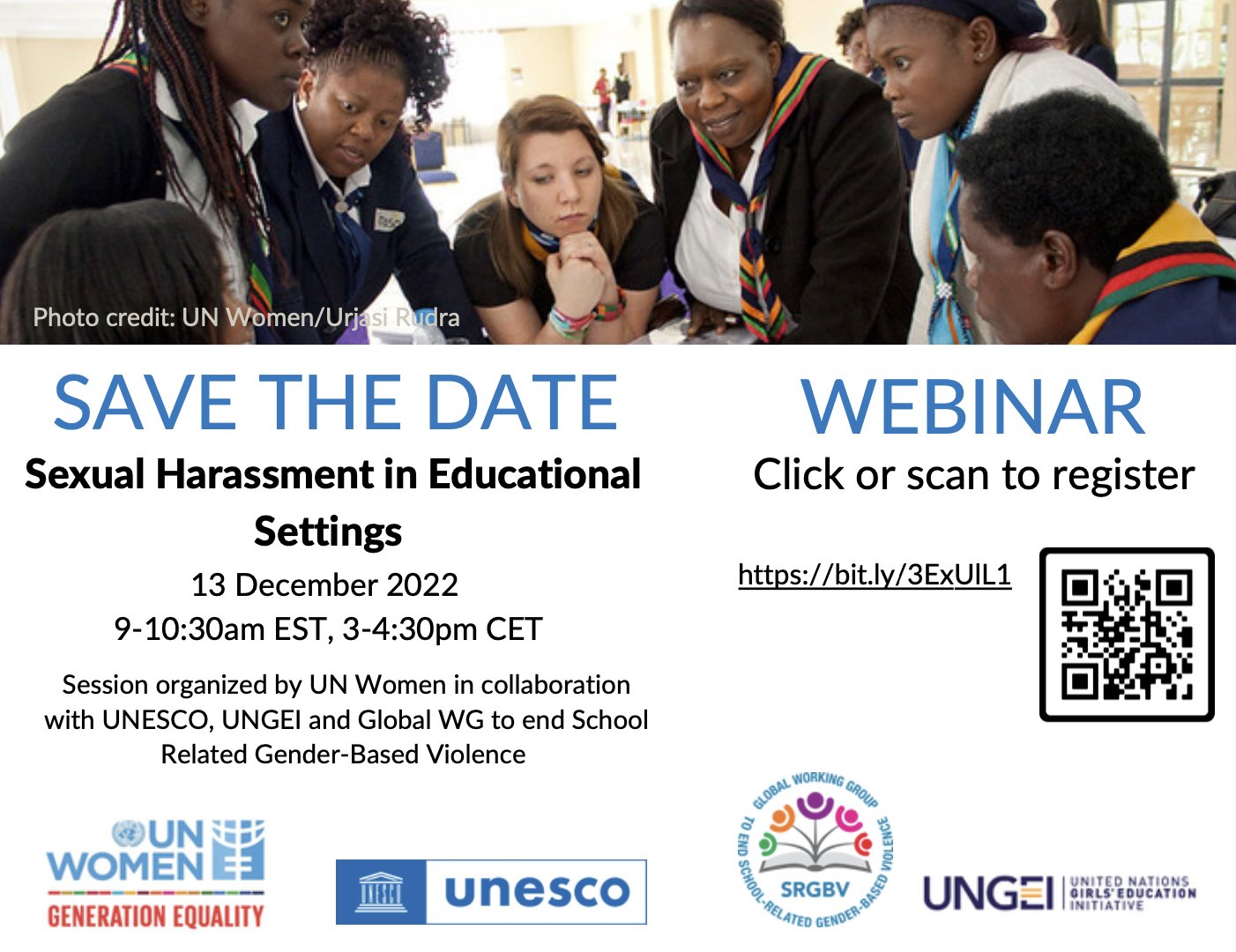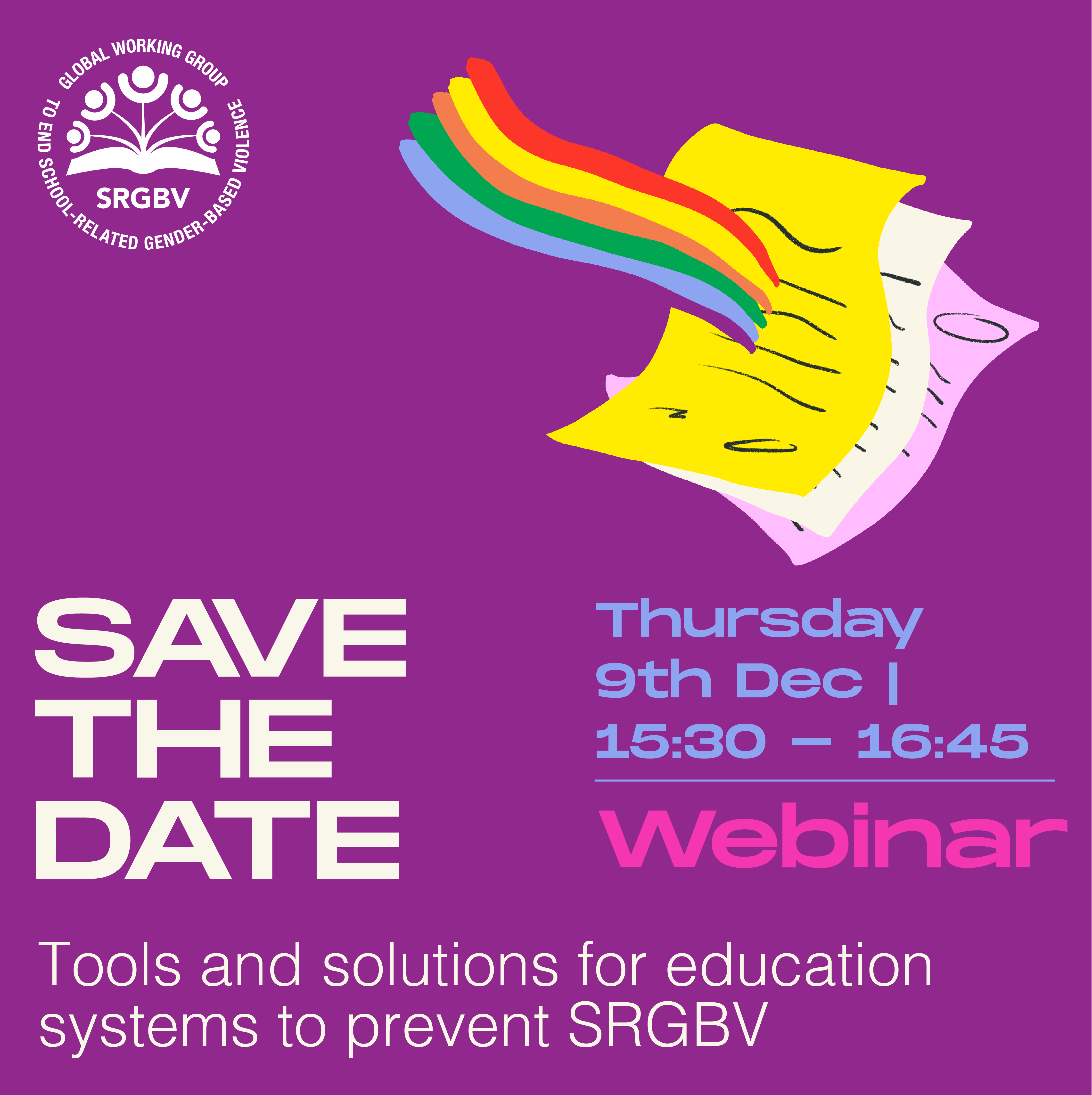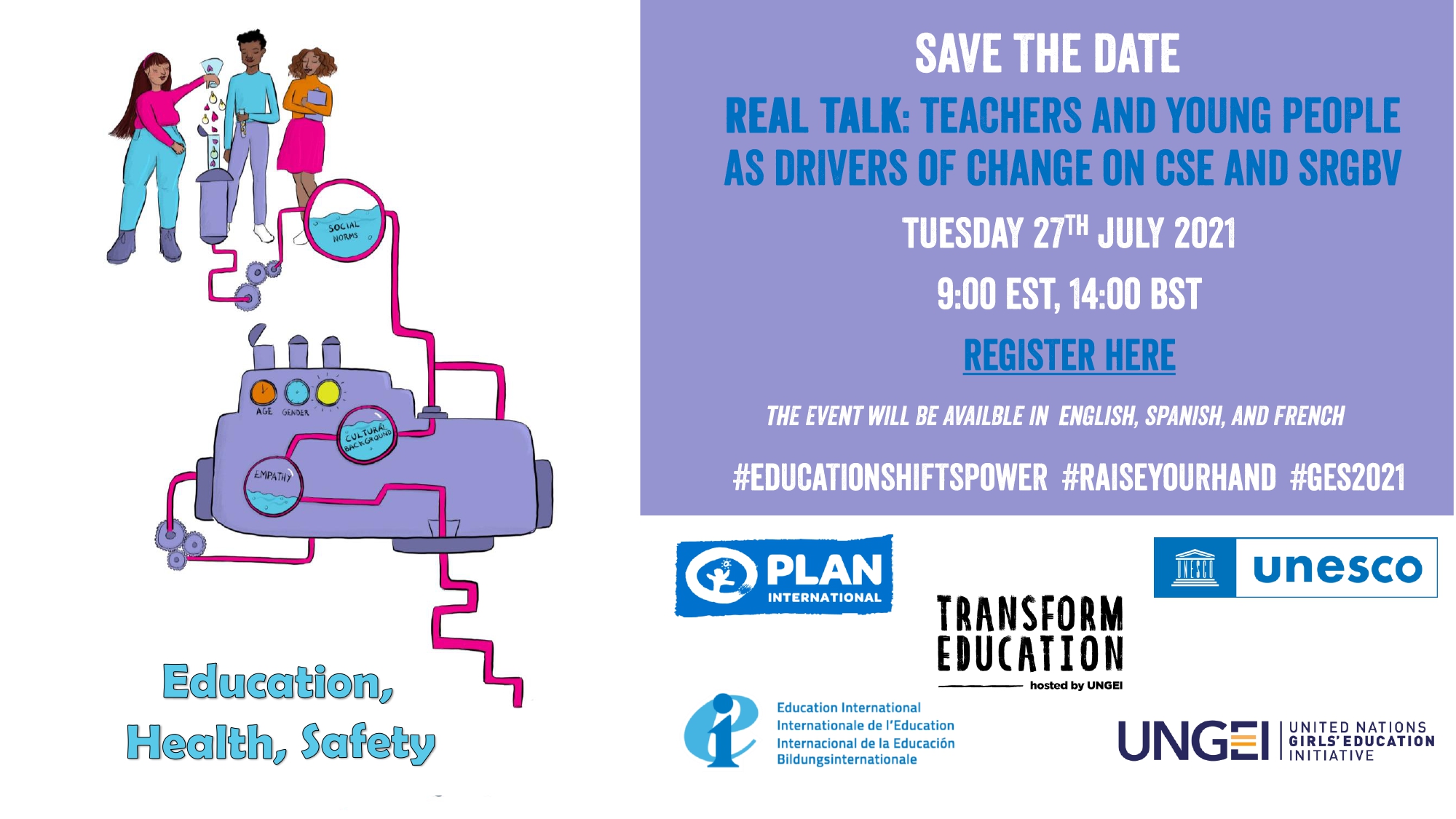The commitment to eliminate gender-based discrimination and violence in schools is enshrined in the Incheon Declaration and Sustainable Development Goal 4 Framework for Action. It is a call to action for the education sector to transform attitudes and behaviours and create a gender-equitable and violence-free society. Embedded in Sustainable Development Goal (SDG) 4 on education, meeting this ambitious vision behoves collaboration and partnership across SDG 5 on gender equality and SDG target 16.2 on ending violence against children.

Violence in and around schools impacts all countries in the world. Over half of the world’s children – 1 billion girls and boys, aged 2-17 years – have experienced some form of physical, sexual or emotional violence in the past year and much of that violence takes place in schools.¹ An analysis of twelve countries that have conducted a Violence Against Children and Youth Survey (VACS) found that between 7% up to 54% of respondents experienced physical and/or sexual school-related violence, with notable patterns and differences in experiences among girls and boys.² Violent discipline in schools continues to be pervasive in many contexts. In some countries, important data gaps exist for certain forms of violence, including sexual harassment, violence perpetrated on the way to and from schools, violence against children with disabilities and LGBTQI students.
To sustainably end violence in and around schools, and violence in general, it is critical to identify its root causes. Schools exist within a community and mirror the values, norms and ethos that its members hold. The drivers of school violence are entrenched in broader forms of gender inequality sustained through a patriarchal system that endorses the use or abuse of power over others. This is pervasive in all spheres where children live and grow -- their schools, homes and communities -- and can also be passed on from parents to children through witnessing, experiencing and perpetrating acts of violence leading to intergenerational cycles of violence. Research has found an association between exposure to violence in childhood (as a victim or witness) and increased risks of experiencing or perpetrating violence during adolescence or adulthood across multiple countries. As the problem is complex, so do the solutions need to be multi-layered and shifting root causes, drivers and systems simultaneously. Multiple forms of violence have to be addressed through a range of interventions and pathways that are intentionally gender transformative.
Gender transformative education provides an opportunity to end inter-generational cycles of violence
Schools have the potential to be transformative spaces for students and teachers to learn new ways of thinking and being. Education is an important lever by which students, teachers and parents become aware of unequal relationships and power dynamics between adults and children, girls and boys and gender-nonconforming children. They can learn to challenge discriminatory gender norms and acts of violence when they are witnessed. Findings from the VACS show consistently that respondents who achieve at least some secondary education often report more gender-equitable attitudes and less acceptance of norms that condone violence.³ Schools and learning spaces can provide safe spaces for children and young people to voice their ideas for violence prevention and become agents of change in their communities.
Learning environments can be gender transformative where all children and young people are free to express themselves in a safe and nurturing space, with positive impacts on emotional well-being, school participation and learning.
Evidence shows effective prevention programmes use multiple pathways and a whole school approach
A whole school approach offers the opportunity to address multiple forms of violence. The combination of strategies that makes a whole school approach strengthens the interconnectedness between teachers, school heads, students, parents, community members and faith-based leaders, education officials and civil society organizations - towards a common goal of dismantling unequal and harmful norms and practices and ending school-related gender-based violence.
In 2018, the UN Girls Education Initiative and the Global Working Group to End School-Related Gender-Based Violence produced A Whole School Approach to prevent School-Related Gender-Based Violence: Minimum Standards and Monitoring Framework. The guide laid out eight domains and a set of minimum standards for practitioners and policy makers to improve prevention and response actions within schools and through the education system. The pilot programme in Zimbabwe showed promising results in: creating more gender equal leadership in student councils; improving teachers and students’ awareness of different forms and acts of violence and where to report it. Teachers demonstrated greater gender awareness and commitment to creating a learner- centred environment and parents and community members were more engaged in school-led prevention activities.
Partnership across sectors is required to shift the needle: Safe to Learn initiative
Enabling conditions need to be in place at the local, national, regional and global levels to ensure all girls and boys are safe to learn independently of where or how they learn. This enabling environment requires key partners from a diversity of sectors, that bring different skills, to come together. This is what the Safe to Learn Global Initiative is about. It was created in 2019 as a collective response to a Youth Manifesto where hundreds of young people across the globe asked the global community to give a higher priority to violence prevention and response in Education. Through Safe to Learn, 14 powerful partners in Education, Violence Prevention, Child Protection and Health work hand in hand to give meaning to collective action and embed a gender-transformative violence prevention lens in education systems globally. Its new strategy (2021-2024) provides a collective methodology to strengthen a Safe to Learn ecosystem for at-scale change. UNGEI and the World Bank are part of Safe to Learn. Safe to Learn also closely works with sister organizations that embody similar values, share the same vision and complement and reinforce each other, such as Together for Girls and UNICEF Office of Research - Innocenti, so that together we can more effectively support countries to deliver positive change for all girls and boys to truly enjoy their learning experience.
¹ Hillis, S., et al., Global Prevalence of Past-year Violence Against Children: A Systematic Review and Minimum Estimates. Pediatrics, 2016. 137(3): p. e20154079
Devries, K., et al., Who perpetrates violence against children? A systematic analysis of age and sex specific data. BMJ Pediatrics, 2018. 2: p. e000180.
² SRGBV Prevalence Estimates (Together for Girls)
³ Together for Girls and partners. September 2021. Back to School: COVID-19 and the Opportunity to Build Safer Learning Environments. https://www.togetherforgirls.org/wp-content/uploads/2021/09/2021-09-30-SRGBV-Back-to-School-Brief.pdf



 English
English العربية
العربية Български
Български Hrvatski
Hrvatski Čeština
Čeština Dansk
Dansk Nederlands
Nederlands Suomi
Suomi Français
Français Deutsch
Deutsch Ελληνικά
Ελληνικά हिन्दी
हिन्दी Italiano
Italiano Română
Română Русский
Русский Español
Español Maltese
Maltese Zulu
Zulu አማርኛ
አማርኛ